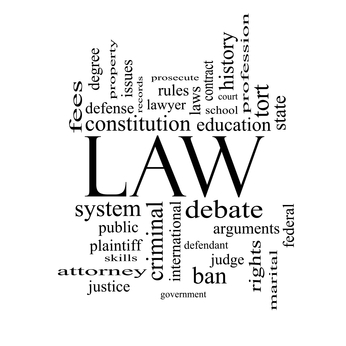- Free Consultation: 866-966-5240 Tap Here To Call Us
When Do California Courts Deem A Defendant to Have “Caused” Personal Injury: Mitchell v. Gonzalez

When do California courts deem a defendant to have “caused” personal injury to the extent that they should be held to pay damages to the injured party? This was a long standing debate in the State of California up until fairly recently. Based upon definitions of “causation” dating back to English tort law and moving forward to the 20th century, there were differing standards. In 1991, in a decision entitled Mitchell v. Gonzalez (1991) 54 Cal.3d 1091, the California Supreme Court made a ruling which did away with some of these varying definitions and made a decision that now forms the basis for the current jury instructions including California Civil Jury Instruction 430.
Legal Background of Defining Who and When Someone “Causes” A Personal Injury
Prior to the Mitchell decision, California Courts held that a defendant’s conduct, error or omission to act must have been both the “actual” and “proximate” cause of injury or harm to another person in order to hold them liable for civil damages. Defining these concepts led to varying jury instructions including BAJI 3.75 and BAJI 3.76 (the two former CA civil jury instructions on personal injury causation). Under BAJI 3.75, juries were instructed that the a person or entity could not be held legally responsible to pay a personal injury award unless the jury could decide that “but for” their negligence, the incident causing harm would not have occurred. Alternatively, BAJI 3.76 defined the “legal cause” of an alleged tort to be something that was a “substantial factor” in creating the danger that harmed the plaintiff.
Mitchell v. Gonzalez (Example of Causation Conundrum): The facts of this case were that a 12 year old child was invited on vacation by a family. The child drowned and died while playing on a paddle board in a lake in water over her head. At the time of the incident, the child was with two of the defendant’s children and the parents were arguably, not supervising the children as closely as they should have been. There was also argument, though, that one of the parent’s children had “pushed” the decedent off the paddle board prior to the drowning. At the time of trial, the plaintiffs requested BAJI 3.76 and the defendants demanded BAJI 3.75. The court gave 3.75 and the jury came back with a decision that the parents were negligent but, that their negligence wasn’t the “proximate cause” of the death of the child. The CA Sup. Ct. decided that BAJI 3.75 was causing too much confusion as to how to define legal causation and there was too much discord within the courts as to when it was appropriate to use 3.75 and it prejudiced the plaintiff’s claims in this and other instances enough where it should be done away with and permanently replaced by 3.76, which simply required a showing that the defendant’s conduct was a “substantial factor” in causing harm.
Present Legal Standard for Personal Injury Causation Under the Laws of the State of California
All of the prior “BAJI” instructions were re-drafted into the present jury instructions entitled, California Approved Civil (Jury) Instructions (aka “CACI” Instructions). Based upon the Mitchell ruling, California now has a singular definition of when someone has “caused” personal injury to another to enough of an extent that that person or entity should be held to account. Just about every definition of a tort on California including negligence and intentional torts like assault and battery now state that the defendant’s conduct must be a “substantial factor” in causing damages to the plaintiff. The legal definition of a “substantial factor” is set forth in CACI 430, entitled, CAUSATION – SUBSTANTIAL FACTOR which states as follows:
“A substantial factor in causing harm is a factor that a reasonable person would consider to have contributed to the harm. It must be more than a remote or trivial factor. It does not have to be the only cause of the harm.”
Importance of the Substantial Factor Test For Personal Injury Victims in the Golden State
In my opinion as a civil trial attorney in California, the Mitchell decision has provided one clear standard for proving fault (i.e. Were the acts or failures to act by the defendant “more than a remote or trivial factor” in causing the plaintiff’s injury or death?) The fact that there can be several causes of an incident and even several persons who may have caused a catastrophic injury or death is no longer confusing if a jury understands that any factor which causes harm leads to legal responsibility unless it is so remote or trivial that they should not consider it.












